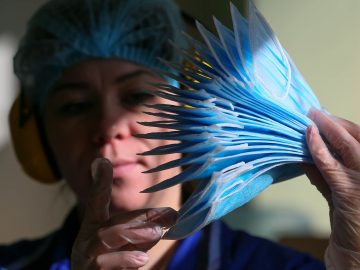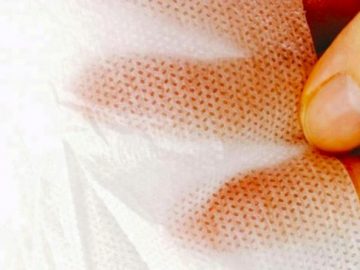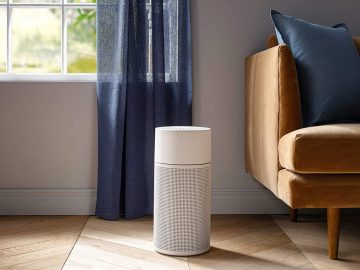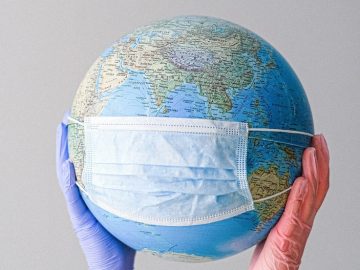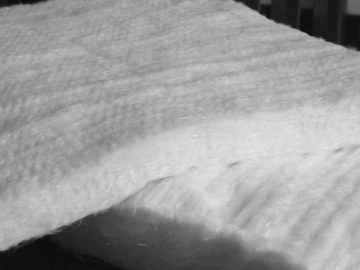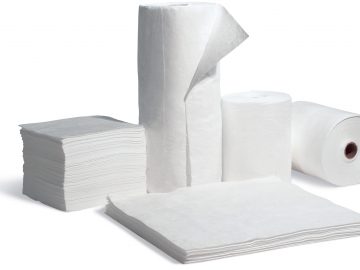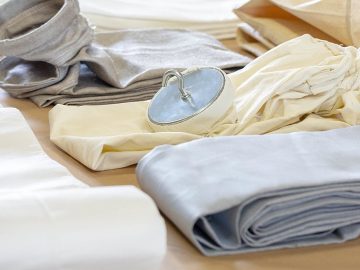Covid-19 in 2020-21 – PP Melt Blown Filter Media – Why it is the best Nonwoven Medium for Face mask in COVID19 Times
In these unprecedented times, it is needless to say that high-quality air filtration media that are used in masks is high on priority. Owing to which Meltblown technology [PP Meltblown filter media] has seen a rising demand graph, especially within the medical and hygiene industry. Besides, the unique characteristics of melt blown filter media by the process of forming a web from molten polymers without stretching make the technique extraordinary and very cost-efficient. With respect to the alarming current global health scenario [COVID 19] the number of infected cases is rising across globe, that too, very steeply, making the demand for protective measures, like facemasks constantly rising, for the last couple of months. Due to the extraordinary absorbent properties of the PP Meltblown nonwoven fabric fibers, they are considered a wonderful raw material for preparing disposable surgical and N95 facemask media. Surgical and N95 Masks manufacturers across the globe are looking for good quality melt blown non-woven filter media to supply facemasks to the healthcare/ pharma and hygiene industry. Here, let us know more about the basics of melt blown technology, the raw materials used to prepare nonwoven filter media, its benefits, and its applications. What is Melt blown technology? Melt blown non-woven technology is one of the supreme and highly advanced techniques to prepare strong, unique, and dynamic filter media. The key ingredients used are thermoplastic resins/ PP that have significant absorption and cohesive properties. What is the Melt blown manufacturing process? In the first step, the thermoplastic resin is heated to a semi melting temperature. Once it is melted, the raw material is forced out immediately through an extruder designed with a large number of holes, it is placed very close in the order of 1000-4000 holes per meter. These holes are created either by mechanical drilling or direct fusion of two plates that contain etched channels. The pore size is designed to ensure better filtration efficiency and making sure that it should not require additional support from another web. The melted dye will be supplied by a metering pump. This device is designed to ensure the flow of clean polymer mix consistently with unique variation in temperature and viscosity whenever required. High-velocity blowers are placed at specific angles outside the extruder ensuring a fine stream fiber. The polymer goes through three different heating zones. The thermoplastic resin in this manner change into endless fibers that are ultra-thin and long and it all happens in the matter of milliseconds. When compared to the spunbond manufacturing process, the meltblown process stands out due to the hot air that immediately converges with fiber the moment the fiber emerges out from the die, ensuring a continuous stream of fibers that are softer and bulkier. Mostly, the meltblown fiber making technology is used to create ultra-thin fibers that are many times finer than normal human air. It ranges from 10µm to 120µm. This process is extremely advantageous in comparison to other systems for creating microfibres. What are the few most important raw materials used for nonwoven filter media? Especially in these times of pandemic, a high-quality PP meltblown nonwoven filter media is the utmost material to manufacture high quality, high filtration, and hygiene material, starting from N95 mask media to surgical masts, to body coverall and other hygiene material required by frontline workers and other medical staff. Choosing the right material is quite tricky though. The choice of material depends upon the molecular weight distribution and how easily it can be turned into fine fibers. The most common polymer used for meltblown technology is Polypropylene commonly known as PP. there are other several varieties such as polyester, polyamide, and polyethylene but that depends on the need. PP – Polypropylene – How is it helpful for melt blown fiber manufacturing? Polypropylene or PP is the most common raw material for PP melt blown technology. It is primarily used in vacuum cleaners, cabin aircraft filters in aircraft, air filters applications wherever fine grain of dust needs to be absorbed, and most prominently the Filter Mask Media. It is possible to electrostatically charge the filters made from Polypropylene to enhance the particle removal ability. Key Application areas of Melt blown Fibres Melt blown nonwoven fiber generation technologies are unique. As we already know that micro-denier fibers are less than 0.1 deniers per filament. With meltblown fabric manufacturing of fibers in this range, various options for its applications become available in a wide range of sectors. Various industries are served by this product as prime raw material, owing to its unique characteristic feature, nature, and quality of the fiber. Popular Applications Areas of Meltblown Fabrics: Medical – Healthcare Industry: Especially During these COVID times, products such as sterilization wraps, Body Coveralls, Disposable Gowns, PPE Kits, and surgical and protective gowns have been one of the most significant application areas of Melt blown Non-woven Fabrics. Melt-blowing technology is also used to prepare fibers or media to help in controlled drug delivery systems. One of the major segments in the medical and healthcare industry that extensively utilizes melt blown filters is the production of surgical face masks and N95 and N99 respirators filter media. The excellent absorption qualities of the fibers, make it possible for the surgical masses to protect from even the smallest airborne contaminants and playing a major role in the prevention of viral diseases. Filtration Mediums: As, filtration mediums is one of the largest applications of Melt blown filters in the industry. Mainly filtration media for liquids and gases and can be witnessed in water filters cartridge filters, Aircraft cabins, and more such places. Oil Absorption: Melt blown Nonwoven fabrics use prominent use in the oil industry owing to their absorption properties. Mostly, used to clear accidental oil spills. Apparels: Meltblown Nonwoven fabrics used in the market segments where thermals are used for thermal insulation purposes. Other Uses: Various other uses of Meltblown technology are seen in the production of goods such as – hot melt adhesives, computer discs, battery separators, tents, and many others. Advantages of using Meltblown filter Media: Final

